NSW south coast bushfire towns on edge as ground dries and El Nino looms
It’s been almost four years since NSW was ravaged by the Black Summer bushfires, and locals fear the coming season is going to see a repeat of the nightmare blazes.
NSW
Don't miss out on the headlines from NSW. Followed categories will be added to My News.
“They’re coming.”
Travel down NSW’s coast, and you will hear these words everywhere. Some whisper it, scared verbalising them will make it real. Others spit them defiantly. Angry.
It’s been almost four years since NSW was ravaged by the deadliest fires in recent history. Four years since entire towns were decimated, millions of wildlife lost, 26 human lives extinguished.
Since then, these communities have suffered a biblical domino of crises. Fires. Pandemic. Floods.
For a few glorious months, things appeared normal. Endless rain led to bountiful crops. Destroyed homes were replaced with new fireproof modern structures.
But now, things are drying out again. An El Nino declaration from the Bureau of Meteorology seems imminent. American forecasters says there’s a 90 per cent chance. With this comes the visceral fear; fires are coming.
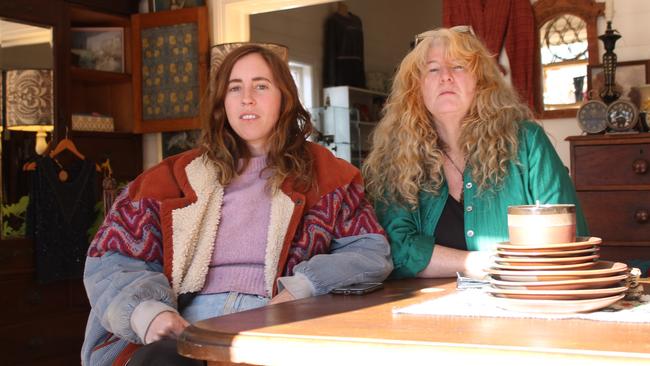
“I know I should be sorting out my finances but all I can think about is the fires,” says local Erin Lynzaat, sitting with her friend Tess Spicer. Both have a smile that doesn’t quite reach their eyes.
This conversation could easily have been in Mogo, Lake Conjola, or any of the other hundreds of towns across NSW hit by the fires. In each town it’s the same. The fires may have happened over three years ago but the legacy still smoulders.
You see it in the fireplaces that go unlit in the middle of winter. The lingering cough that locals just can’t seem to shake. The unfamiliar, metal-reinforced homes and the blacked vacant blocks of land.
And now it’s in the weather.
“This winter is almost identical to the winter we had in 2019 and that’s terrifying.
“It feels the same (as last time) and I think it’s triggering for a lot of people,” says Tess.
Erin looks up. “I am fully expecting there to be fires this year.”
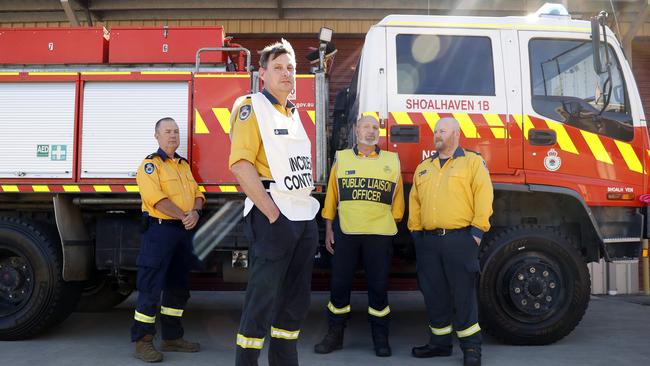
Across the state, the RFS is gearing up for fire season. In some areas the season has already officially begun, and this time, the one word on every firefighter’s lips is “grassfires”.
“Obviously, the landscape is changing after three incredibly wet years,” RFS Inspector Ben Shepherd says.
Growth of underbrush and grass has exploded.
This same rain has limited hazard reduction.
Each year, the RFS aims to burn 250,000 to 300,000 hectares in hazard reduction fires. “Normally, we achieve anywhere between 79 per cent of those targets,” Inspector Shepherd explains: “This financial year, we achieved just over 20 per cent of our targets.”
Now time is running out. Once-green grass is drying out.
In Cobargo, the town’s main creek has slowed to a trickle. For many, it’s an all too familiar reminder of last time.
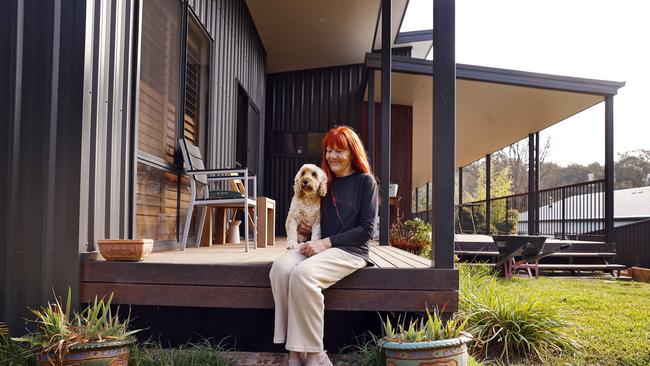
“When I step outside onto the grass and it crinkles and crunches beneath your feet then it reminds me of 2019, it reminds me of how it was then,” says Zoe Pook, from Cobargo.
“Everything’s crunchy, everything dry, there’s dust.”
She lost everything in the fire, her home and business. She and her husband and two daughters have since rebuilt, a fortified home.
“It’s a very uneasy feeling.”
On the way back to her temporary jewellery shop, one of five demountable stalls built behind the ashes of the town’s main street, Zoe runs into friend and fellow artist Sally Wilson, who fought the 2019 fires.
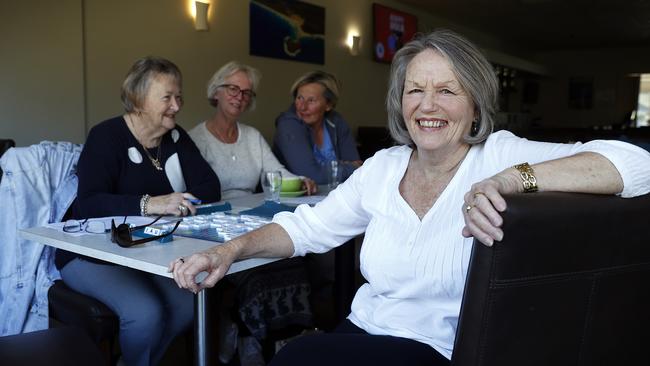
For hours, she and her partner desperately worked to save their brand new home, finished just a few weeks before the fires came. She saved her home, but not her art store.
“How are you doing Sally,” says Zoe.
“I’m OK … it’s just the anxiety of what’s coming. The dams are already down … Just watching it dry up is a worry. I can’t remember the last time it rained.”
Already, she has begun carting water into the property, and has put new taps up around her house.
Sally’s eyes glaze over, and she looks into the distance, staring at the brown hills.
“Once you see you can’t unsee. It changes you.”
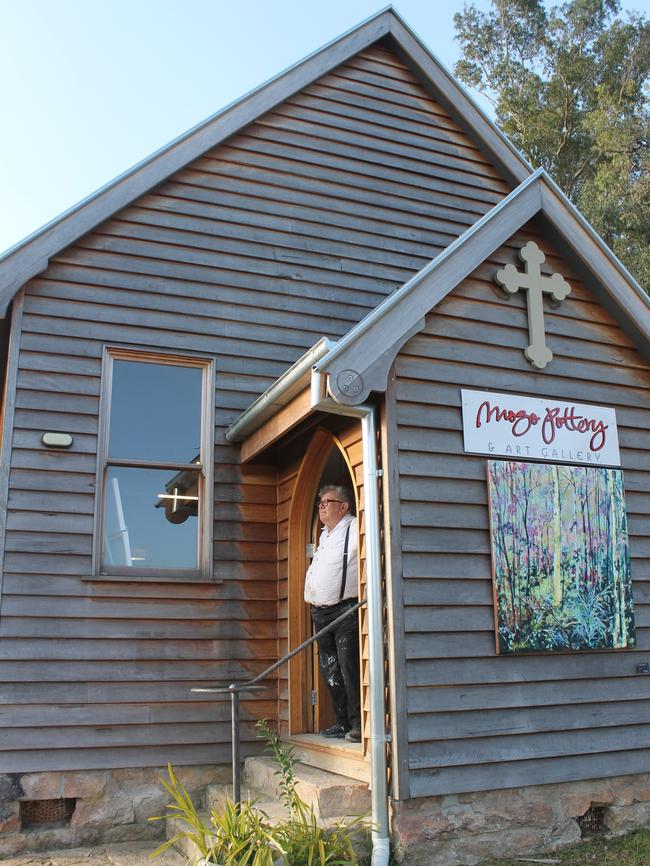
Senior fireys want Australians to know that this time will be different.
Superintendent Matt Reeves, from the RFS Shoalhaven District explains: “It’s not going to be another 2019/2020 bushfire season. We’re not on the back of four years of drought … but we’ve got fuel on the ground.”
He says that while bushfires will still pose a risk for areas that didn’t burn last time, the main concern time round will be grass fires.
Rapid, lightning-fast fires that race across the ground, swallowing up paddocks and scrub. Wiping out crops. Generally less intense than bushfires, but just as dangerous.
“With grass fires you don’t get massive week after week campaign fires, you get short sharp burst, but they quite often they do catch people unaware,” he says, adding that you can’t outrun a grass fire.
“The issue with grass fires is they move incredibly quick, about three times or at least three times quicker than a bushfire, so they have that ability to quickly cut roads, impacting things like farming infrastructure and livelihoods.
“Because they are often thought as being probably not as bad as a bushfires, it’s not unusual to see landholders that have been caught out trying to protect their machinery and stock.
“We have seen people lose their lives or get significantly hurt during grass fire events.
“During July alone we attended more than 1300 grass and scrub fires compared to just 350 in the same period before. That’s relatively busy for a July period. It’s illustrating conditions are drying out.”
Just how bad they will be, is yet to be seen.
“Whether or not (these fires) will be are absolutely horrific will be determined by the weather leading up to the event. If we have two weeks of hot, dry and windy weather, these fires could become quite bad,” Supt Reeves says.
It may not have been declared, but fireys have started preparing for an El Nino summer.
In Nowra, more than 60 firefighters gathered to run a fire stimulation training day.
Insp Reeves says the drills are a standard part of RFS training and are a crucial part of fire preparation.
“Each year, we run upwards of four to six of these events across the state. We bring a whole bunch of firefighters in and existing incident managers in and we create that environment.”
Some locals have begun taking matters into their own hands.
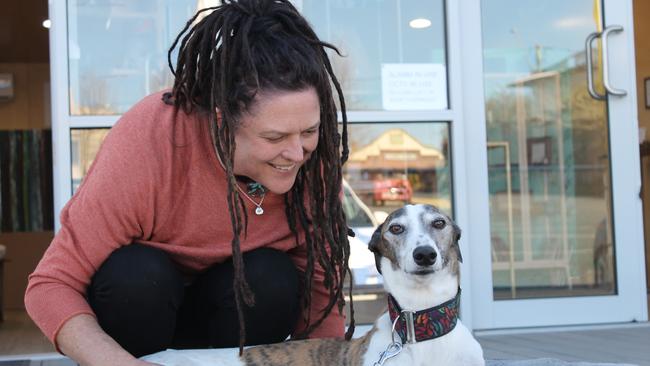
At Zoe Pook’s new home, telltale signs of fresh fire are everywhere. Her husband, Scott Herring, has been lighting his own hazard reduction fires.
A south coast resident who built a bunker on his property in preparation for the 2019/2020 season says it saved his life.
“Everybody should have one. The Victorian Black Saturday fires were a wake up call … I sheltered here during the 19/20 fires. It was a refuge … still when I walked out, I had lost buildings,” he says.
“They will be back. The fuel is there. It will just take one spark and a wind.”
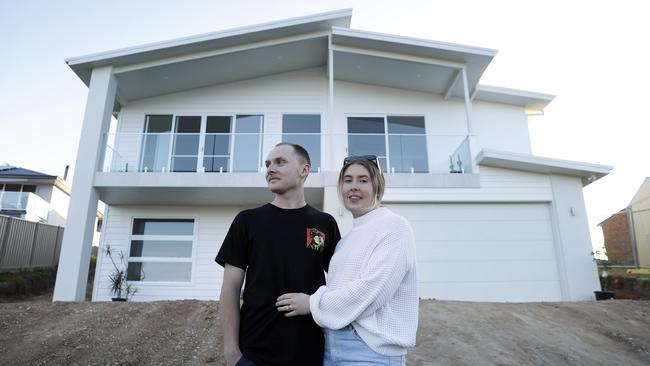
In Mogo, almost 100km away, Joy Murdoch, who lost her home in the fires, is only just starting to realise what she went through.
Mogo gained global notoriety after the inferno engulfed the tiny town, decimating the town’s historic church. On the surface, both are thriving today.
Still, she like many, feel they didn’t get the chance to process the fires properly, their trauma disrupted by Covid and then floods.
She proudly shows us around her newly built house, but when we stop and talk about what happened to her, a distant look fills her eye and she begins stroking her dog, holding on to her tightly.
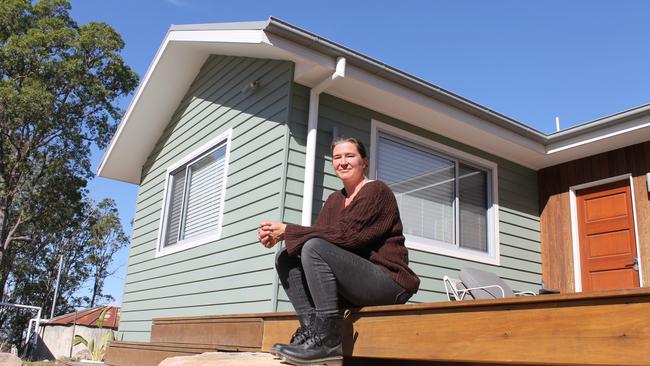
“When you chat to people (it’s very much foremost on their minds) … It always ends up being spoken about but I think that because we went in transitioned into Covid so quickly, I think the fires became secondary quite quickly.
“The same happened with the floods … a lot of people are left kind of just flailing,” she said.
In Cobargo, Erin Lynzaat, mirrors Joy’s thoughts: “The last few years it’s been really rainy … there’s been a buffer zone from actually going through and experiencing the trauma.”
In Lake Conjola bowling club a group of women, hunch over a scrabble board, sipping lemon lime and bitters. They formed the group after the fires and now meet weekly.
When we mention the fires, they tell us it’s too hard to talk about before erupting into a 45-minute conversation about what they went through. They talk over each other, words spilling from their mouths.
“When someone starts talking about the fires I feel sick,” says one. “I think I’m gonna burst into tears for a minute and vomit,” another chimes in.
The women explain that many in their town left permanently. It’s a common theme. Vacant blocks speckle the towns we visit, and locals explain that, for some, it was too hard to rebuild. Too expensive to meet the new fire standards. Too traumatised.
Then there are those who will stay.
Ashlea Hardaker and Deon Joyce, lifelong Lake Conjola locals, are standing out the front of a house. Their driveway is just dirt, and piles of storage boxes are everywhere.
They watched as their town burn. They had every reason to leave. Instead they bought the remains of a destroyed house and built a new home.
“We will always stay. It’s home.” they say.
Got a story? Email emily.kowal@news.com.au





